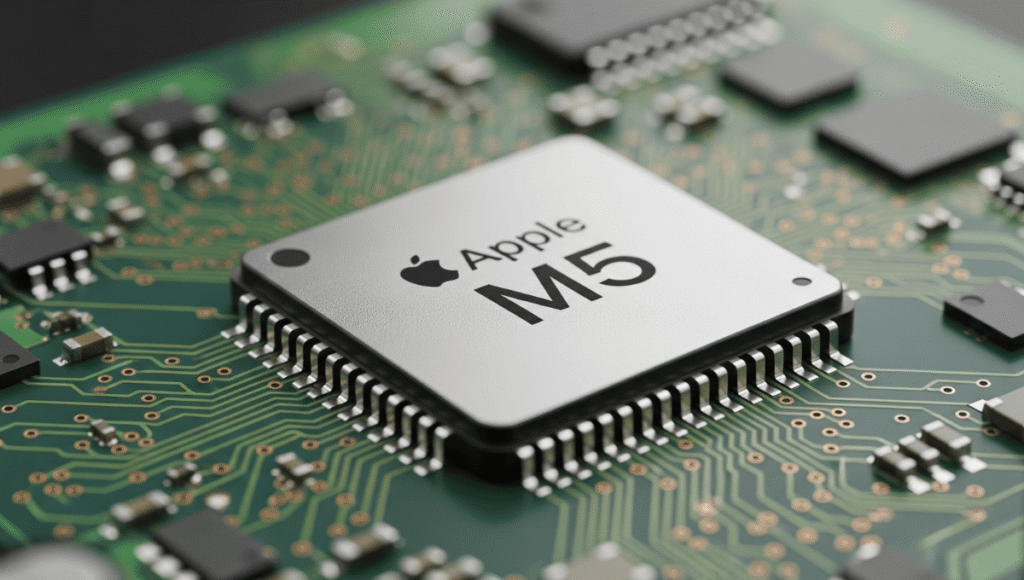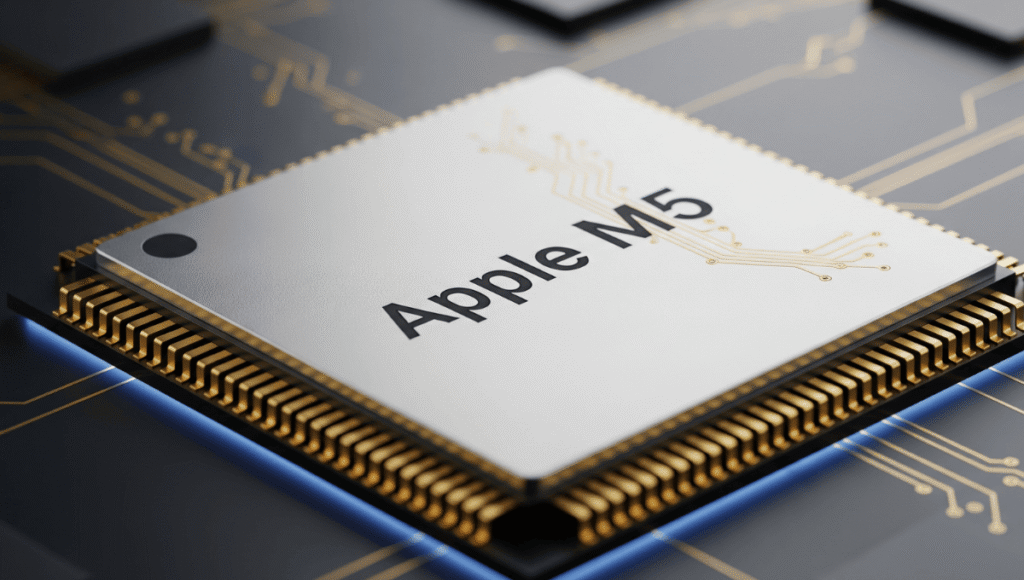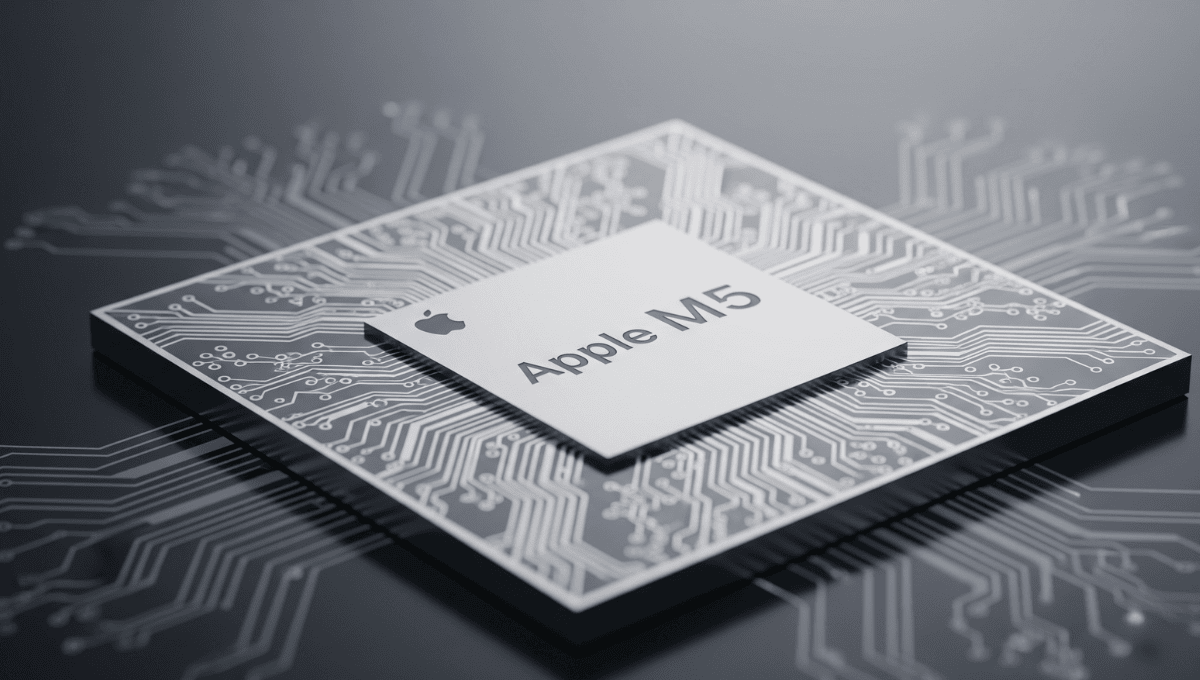Still wondering when the Apple M5 chip release date is coming out? Here’s the latest scoop and why it’s a big deal. So far, Apple hasn’t said anything official, but clues from their suppliers, early software versions, and what other companies are doing suggest we have a good idea of when to expect it.
Supply-Chain Signals: Low-Key Clues About M5 Timing
First up, Apple doesn’t just decide on chip timelines on a whim. Taiwanese news outlets and supply-chain analysts have been quietly tracking materials, thermal compound shipments, and wafer allocations. Over the past several weeks, a few telltale signs have surfaced:
Inventory trackers have noted a surge in TSMC N3P wafer orders directed toward Apple, with some production lines already transitioning. That’s a classic “coming soon” signal.

Suppliers of mold boards and packaging tools (used in advanced SoC assembly) have reported receiving contracts slated for Q4 2025 and Q1 2026.
Logistics firms note unusual freight volumes into Apple’s Austin and Elk Grove manufacturing sites, possibly for prototyping or early-stage validation units.
All of this strongly suggests that production “tape-out” (i.e., when the final chip layout is locked) is happening now — with mass production likely aligned to late 2025 or very early 2026. If your question is, “When will Apple push out the apple m5 chip release date?”, the pre-orders and shipping schedules will probably fall within that window.
What Developers & Pro Apps Want from M5?
Let’s pivot from hardware signals to what software creators are saying:
Xcode beta builds already include references to new core configurations labeled “M5E-Performance” and “M5E-Efficiency.” That suggests Apple’s mirroring the M4 structure: pairing high-power cores with low-power ones.
Video editing plugin vendors (DaVinci Resolve, Final Cut Pro add-ons) are prepping for “support for up to 32 GPU cores” under M5, hinting at substantial GPU scaling over M4 Max.
On-device machine learning toolkit repos (like Create ML) were updated with new “M5 Neural Engine” acceleration flags, demonstrating Apple’s push toward AI as a first-class compute target — even without an official chip launch.
If you’re wondering “Is the m5 chip apple just incremental?” — not so fast. These developer spikes indicate interest in major core expansions and accelerated compute pathways.
What the Competition Means for Timing?
Apple often times its silicon releases to counter moves from competitors. At present:
Intel has tentatively slated its Meteor Lake or later-core refresh for late 2025.
AMD’s Zen 5 mobile chips are targeted for calendar Q1 to Q2 2026.
Qualcomm is rumored to bring a Snapdragon XR1-class device to market around late 2025 / early 2026.
So Apple’s stealthy M5 timeline seems aimed to undercut — or at least stay ahead, of that wave. If Apple’s playing chess, not checkers, it makes sense that:
The apple m5 chip release date hits iPad or Vision Pro first, flagship, attention-grabbing launches.
Then Apple delivers M5 Macs before AMD and Intel surge back into mobile performance. That backs up what analysts are saying: MacBooks with M5 likely land in early 2026.
Beyond Silicon: The User Experience Angle
Let’s talk tangible user impact — what M5 could change on an everyday basis:
1. Faster, quieter multitasking: With more GPU cores and better memory compression, expect smoother multi-window workflows in apps like Final Cut, Lightroom, and Figma.
2. Smarter battery behavior: The rumored M5’s efficiency means not just longer battery life, but also smarter thermal scaling — your Mac won’t heat up under mid-tier loads.
3. Enhanced AR/VR readiness: With evidence of M5 inside Vision Pro 2 builds, Apple hints at an immersive multimedia experience that could redefine spatial apps and creative workflows.
Imagine working in an 8K timeline, running a dozen Pro apps, and still getting 10+ hours of runtime on a battery — that’s where M5 could start to feel generational.
Timeline Recap
Now through Sumer 2025: Manufacturing contracts get locked. Components from wafers to boards, ramp up. That’s your behind-the-scenes supply chain gearing up.
Fall 2025: First public sighting of Apple devices with M5: likely the next-gen iPad Pro (OLED screen, new cameras, upgraded Neural Engine). Could pair with a Vision Pro 2 announcement.
Early 2026: MacBook Air, Pro, and Mac mini make the switch to M5. Pro and Max variants emerge as performance-hungry options for creative professionals.

Mid to Late 2026 and beyond: Apple refines the design further (OLED MacBooks, chassis redesigns) and pushes toward an M6 lineup for a bigger leap.
That narrative—devices first, then mainstream, then design overhaul—is classic Apple.
So… Is It Worth Waiting for?
If you’re weighing “Buy now or wait?” here’s how to think about it:
For performance-hungry pros: Wait. You’ll get more GPU cores, better ML performance, and energy efficiency that enables longer battery runtimes under load.
For early adopters or iPad Pro fans: Keep an eye on fall 2025, that’s when things go from invisible supply chain moves to real, tangible devices offering a first taste of M5 power.
If you care about redesign and visuals: You might still wait for the M6 cycle with OLED MacBooks, but the software and efficiency boosts in M5 are real and substantive too.
Why This Matters (Beyond Just “Chip Hype”)?
This rollout strategy shows something important about Apple:
Focused, risk-managed launches.
AI-first design baked into performance architecture.
Product cycles that balance supply reliability, marketing potential, and competition.
So when you think about the apple m5 chip release date, it’s not just about timing, it’s a signal about Apple’s broader ambition toward seamlessly combining efficiency, power, and next-gen software experiences.
